The train slowed, then stopped. A voice from a loudspeaker said something I couldn’t understand, but I thought I made out the word written on the scrap of paper I was clutching: “Griebnitzsee.” The damp cut through my California-weight jacket. It was my first day in Potsdam, and I was on my way to the HPI D-School, where I’d agreed to spend the next few months as a visiting coach.

My home turf was the Stanford d.school, where I’d been studying and teaching design thinking for five years. With my background in education and in interaction design, I loved both the subject matter of design thinking and the way we created learning experiences. I believed in design thinking’s power to bring international groups together, but had spent my entire professional life in the USA. So, in the summer of 2015, I thought I’d put my money where my mouth was: time to get to know Stanford’s German twin.
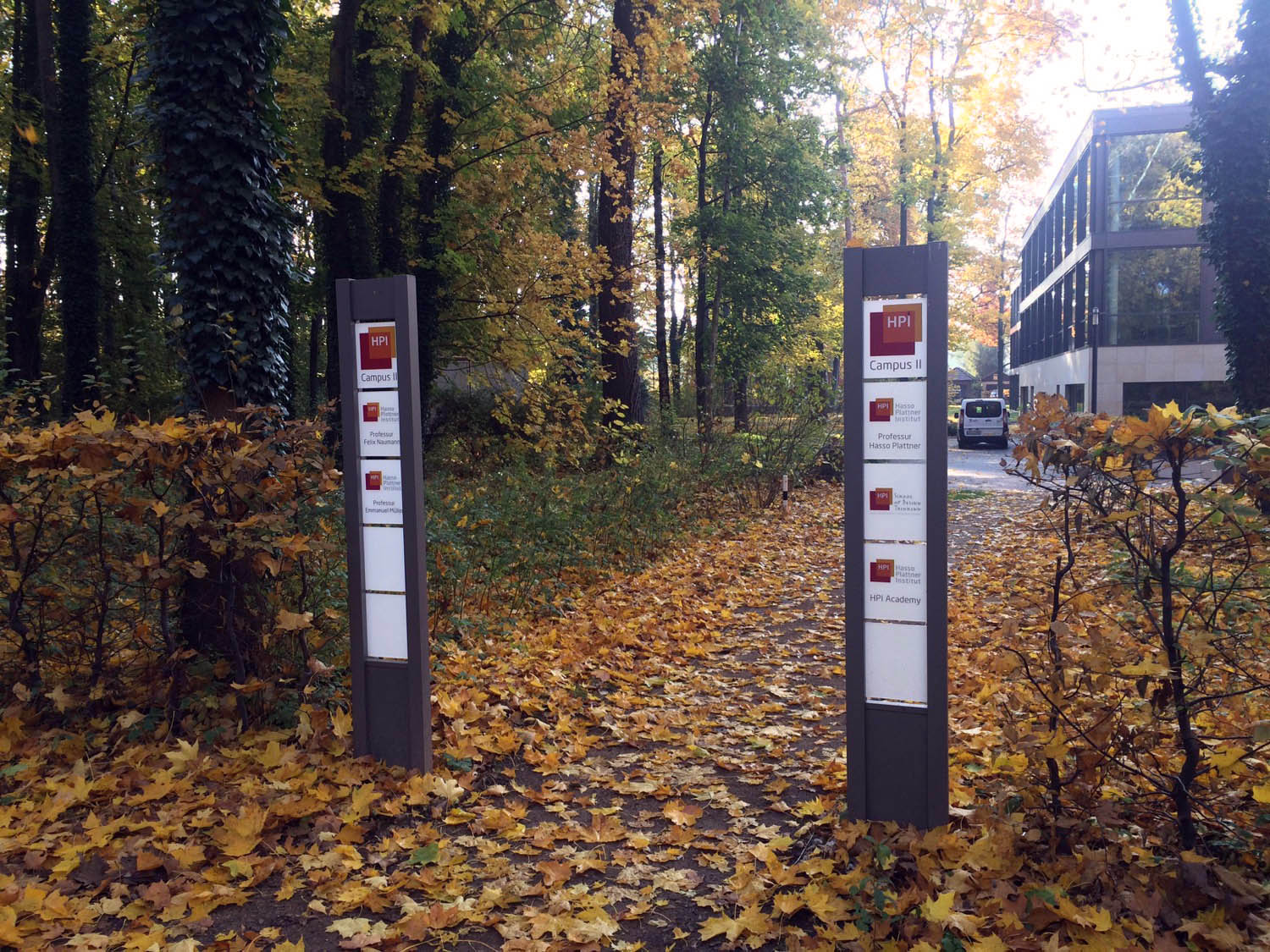
I may not have been able to understand the train announcer, but the minute I stepped inside the D-School, I felt comfortable. I understood the space. I was gratified to see that every vertical surface was a whiteboard, and that the furniture rolled around on casters. I knew how to use strange objects like foam cubes and unusual features like huge metal gongs. I could already imagine the many ways to arrange and re-arrange each room.

I understood what the people were doing. I recognized the personas and frameworks they were sketching on whiteboards. I knew exactly why they were doing strange things like building towers with uncooked spaghetti or slapping Post-Its on each other’s backs. Their hand-drawn app screens and Lego models made sense to me.
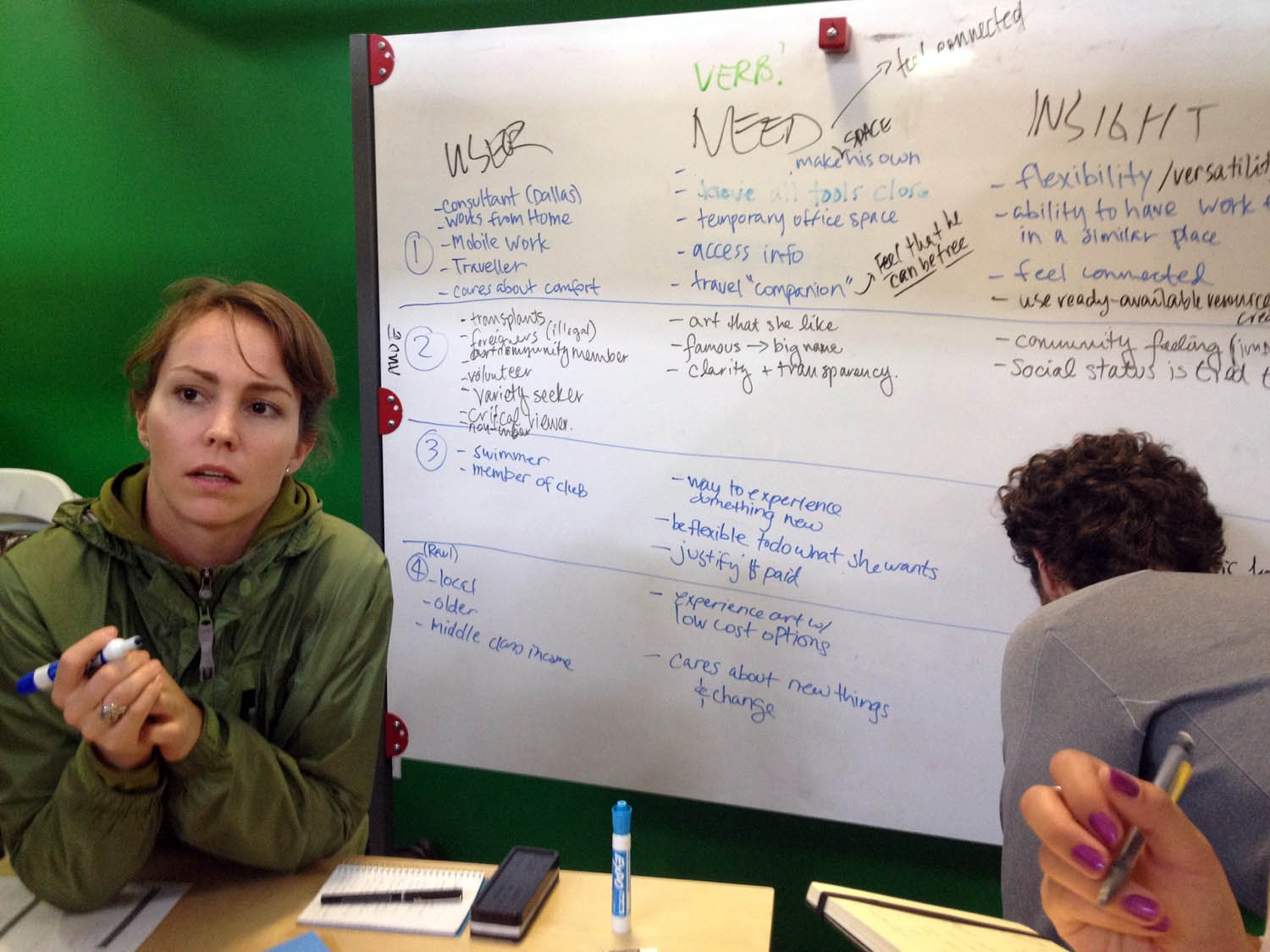
And I could participate in the community. Even though I was brand new, I felt comfortable jumping into the improv games, brainstorms, and prototyping sessions. I could advise student teams and give sensible feedback. In short, even though I was in a foreign country, I’d found a familiar subculture: just like home, but with umlauts.
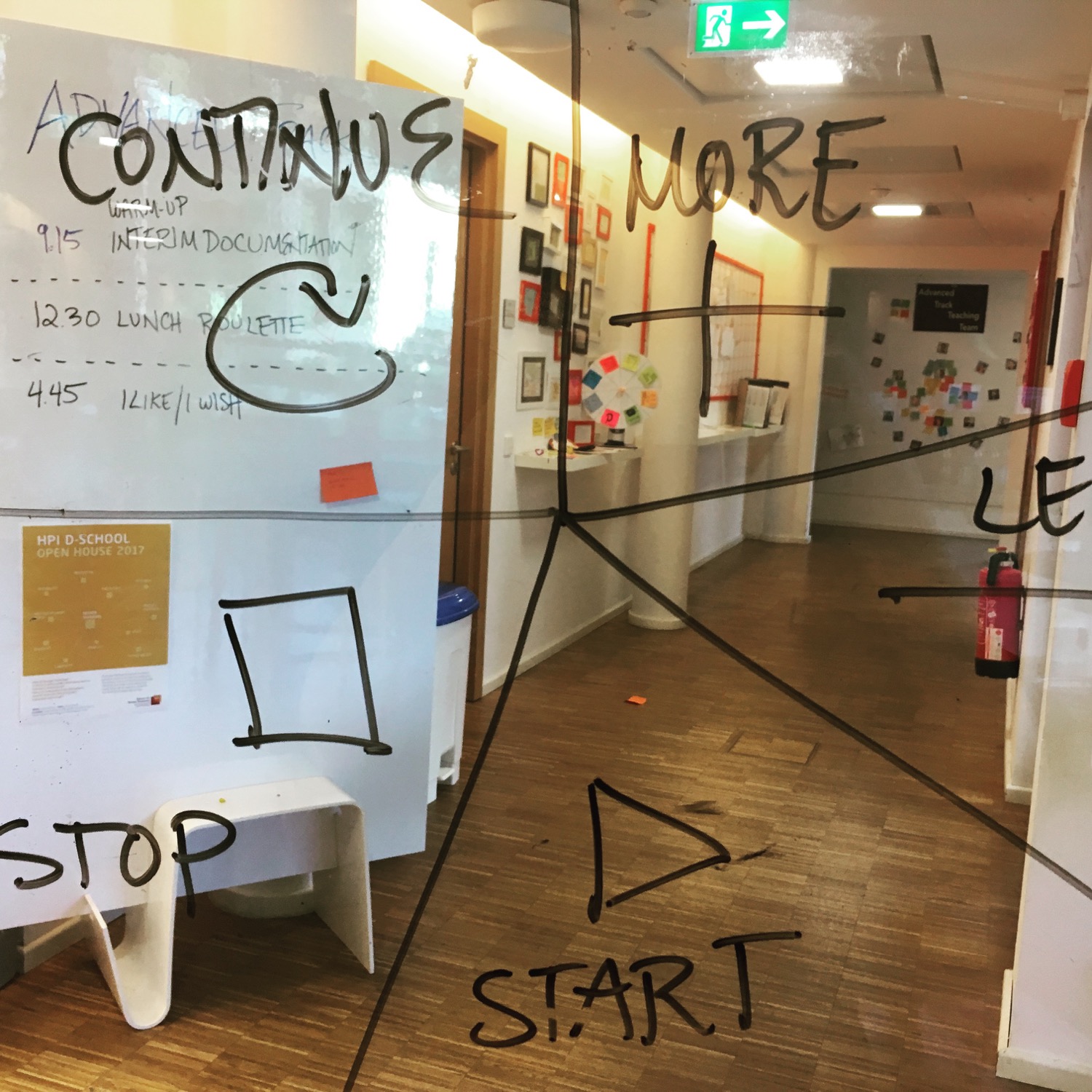
We’ve spread design thinking worldwide in order to achieve exactly this: somebody trained in design thinking can travel across the globe, roll up their sleeves, and contribute. This achievement opens up the world to us, making the dream of diverse people working together into a reality. The global network of people teaching, practicing, and learning design thinking gives us a wide range of exciting projects to tackle, and a company of fellow travelers to tackle them with.
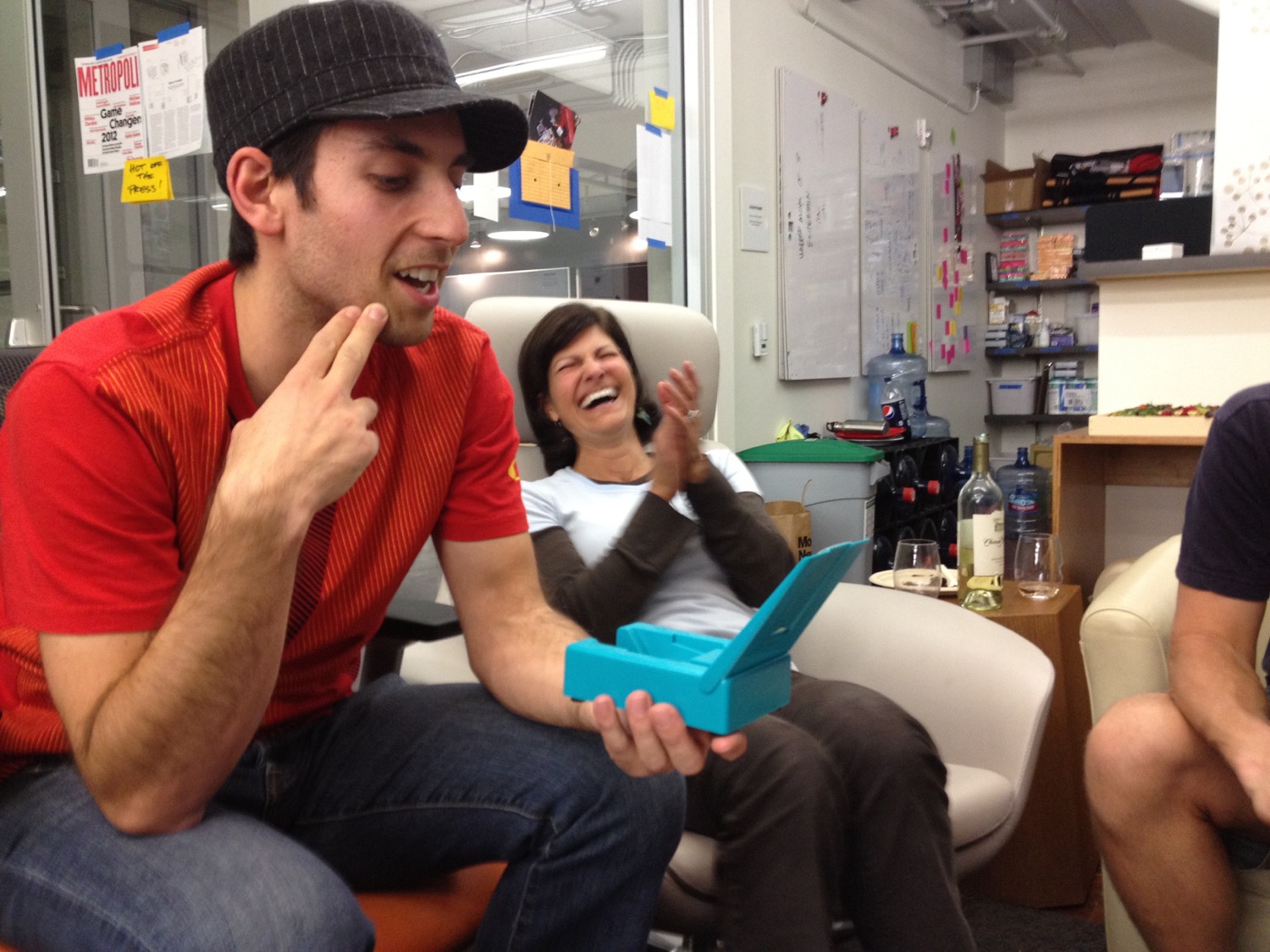
We’ve created a symbolic language that says “we do design thinking here.” Familiar objects – Post-Its, whiteboards, colorful sofas, the same books and method card decks on the bookshelf – signal familiar values. When we see these symbols somewhere, we can make an educated guess about the working practices of the people who put them there.
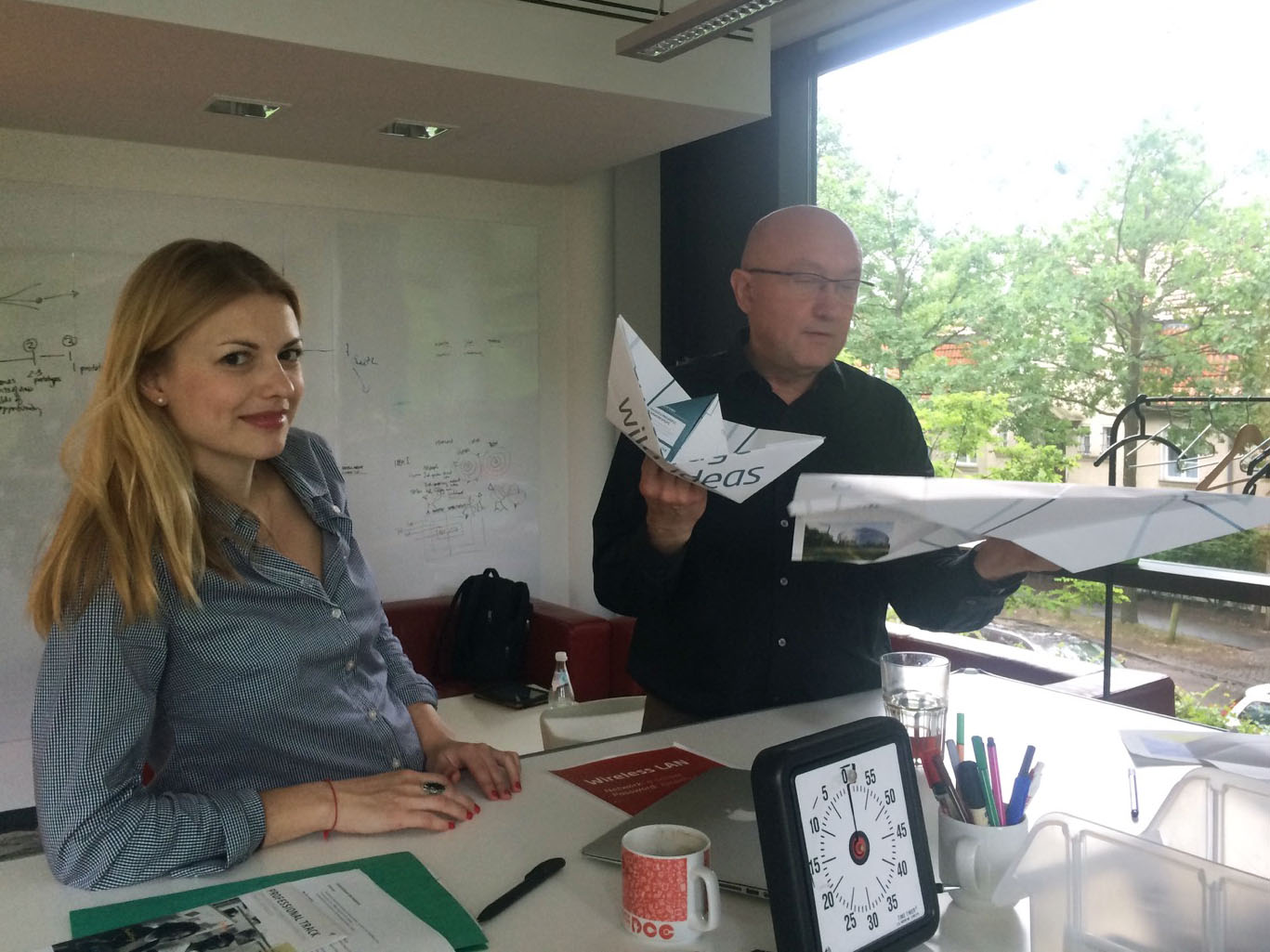
The reality is both more complicated and more interesting than the dream. What we practice is not actually the same everywhere. We’ve been remarkably good at spreading these surface symbols of design thinking. But, as many of us discover the hard way, anybody can kit out their innovation space with wheeled furniture, method cards, and bean bag chairs. Anybody can say that they do design thinking.
It’s a particularly excruciating kind of embarrassment, for those of us experienced in design thinking, to be part of a badly designed design thinking session. I’ve seen my share of people who base their facilitation on copying and pasting design thinking methods they’ve seen, with no idea why they’re doing what they’re doing, no overarching sense of purpose. And I’ve heard professional facilitators repeat myths about design thinking that, if I were new to design thinking, would turn me off entirely. (No, every single activity does not have to be done in a team of six. Design challenges do not have to be as open-ended as possible. You do not have to take all user feedback literally.) Saying this runs the risk of sounding like the design thinking police, but some design thinking practices just aren’t coherent.

Here lies our quandary: on the one hand, we do have to correct and educate people who are doing damage with, or to, design thinking. On the other hand, we have to be receptive to the different ways that people practice design thinking. Though these seem opposite, I think we can do both at once.
To the first point, we urgently need to continue developing and spreading high-quality design thinking education. We need to focus on the principles behind design thinking, so that we don’t create dogmatic “innovators” who only know how to copy and paste. We need to make sure people know that design thinking should be a stretch, but shouldn’t feel like complete nonsense. We need to connect design thinking with other disciplines, otherwise we’re isolating innovation and locking ourselves out of the trends and advancements around us.
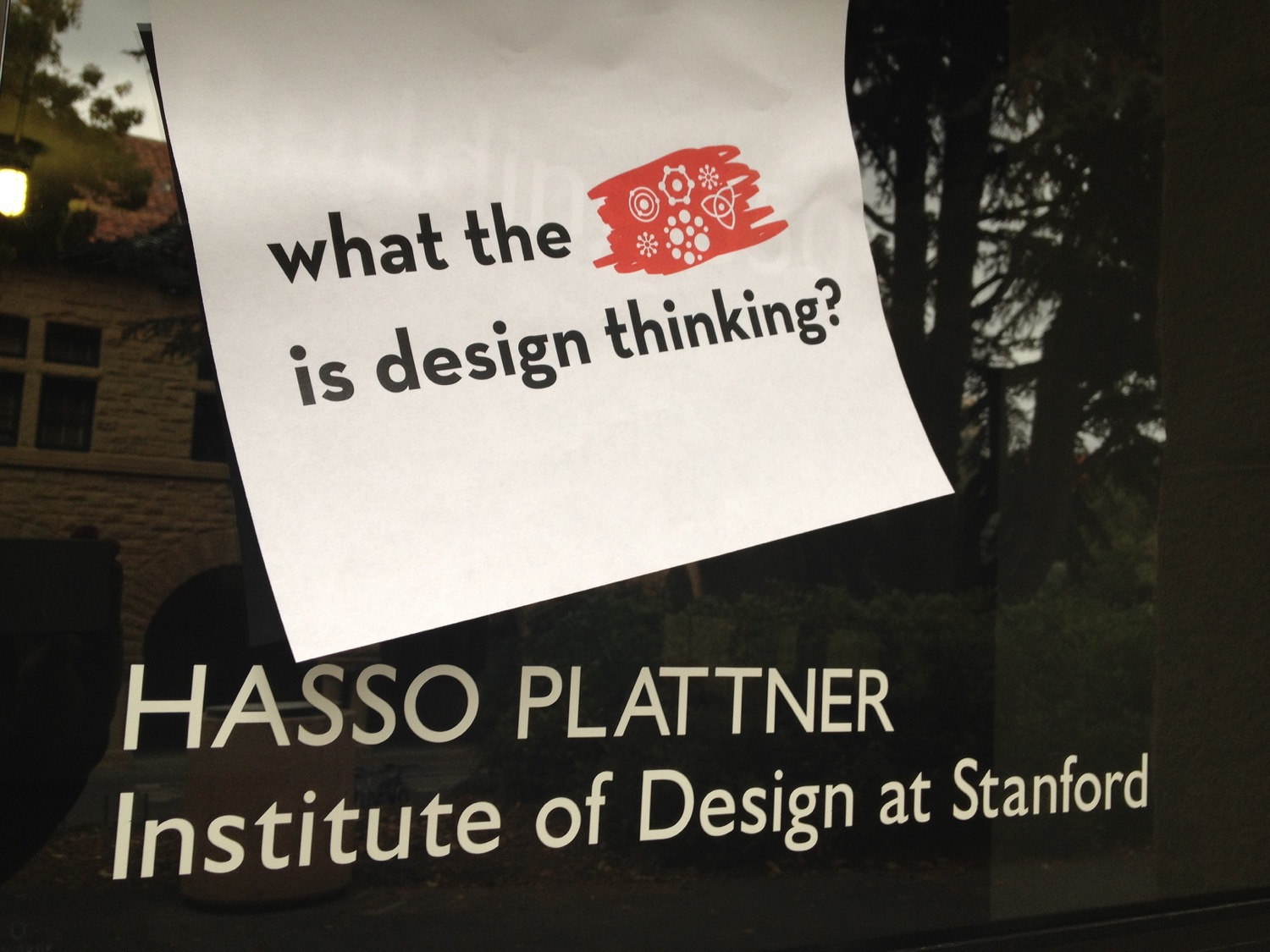
To the second point, I want to remind us of what we so often tell others: when somebody expresses a belief, ask them why. Even if you agree with them; especially if you agree with them. Don’t assume that, just because you’ve reached a similar point, you got there by the same path. It’s not that interesting to know that somebody else practices something they call design thinking; you want to know what’s beneath what they do, especially if it’s a bit different from what you do.
Why did it appeal to them in the first place? What tools and methods are the backbone of their practice? Where do they learn more about design thinking? What are their favorite texts, websites, news sources? How do they transmit design thinking practice within their team and their organization? What problems is design thinking solving for them? And what problems isn’t it touching?

The comfortable idea that we’re all doing the same thing masks what’s really interesting: the spaces, the gaps, the tensions. If you haven’t seen design thinking practiced lately in a way that leaves you puzzled, you’re working in an echo chamber. What seems strange, messy, or wrong may have very interesting reasons behind it. You learn the most about design thinking when you run into people using it in a way that surprises you – a lesson I started to learn after a couple months in Potsdam.
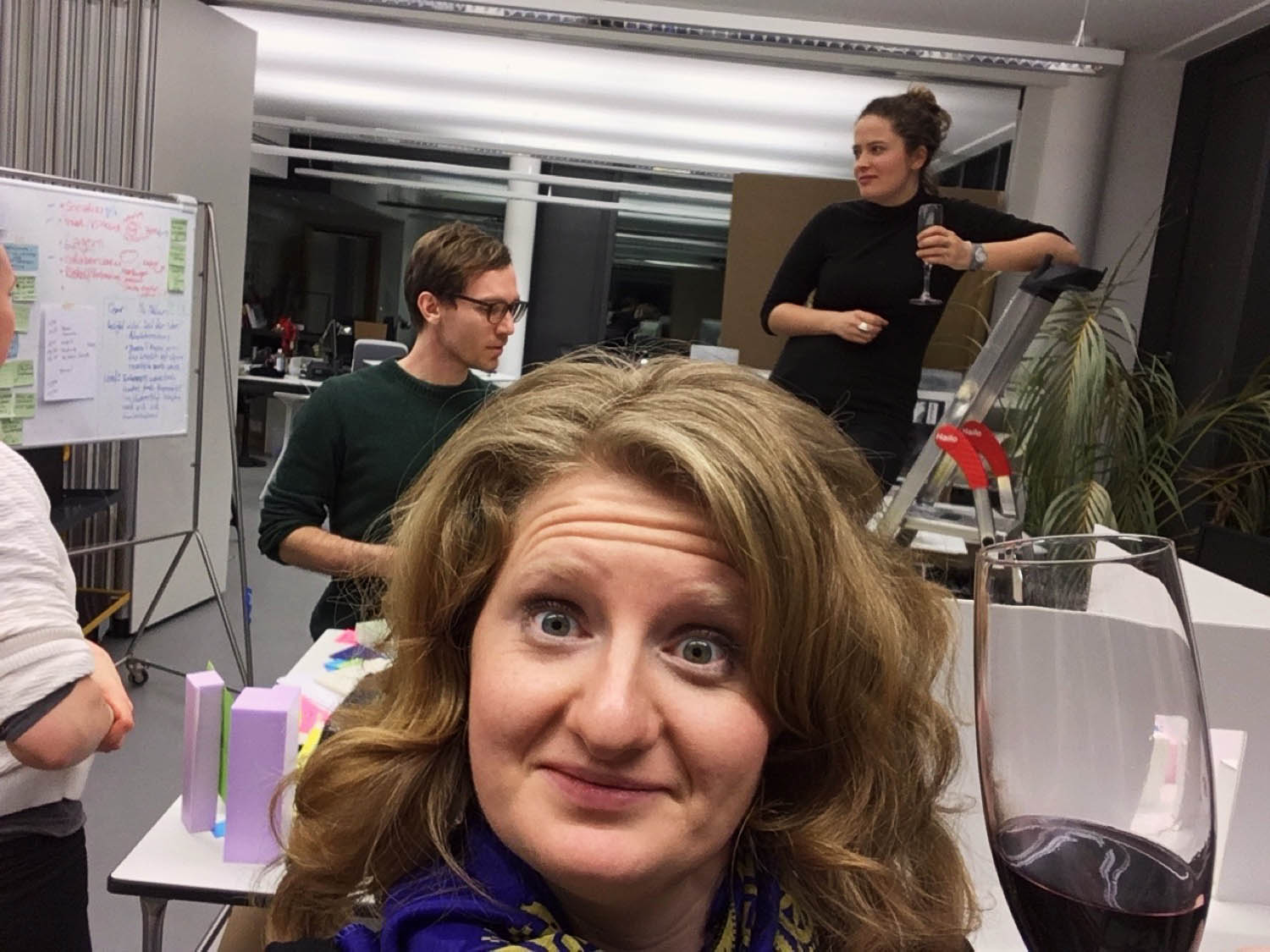
At first, design thinking at the HPI looked and felt like design thinking at Stanford. The Stanford d.school and the HPI D-School do have a lot in common. Both started developing design thinking education programs almost a decade ago, founded on shared principles. Both are learning institutions that offer a structured educational program that’s been refined and polished over the years. It sounds naive in retrospect, but I really expected that practicing and teaching design thinking would be basically identical in Potsdam and Palo Alto. But, as the weeks turned into months, I started to realize that this seemingly familiar place was full of surprises and lessons.
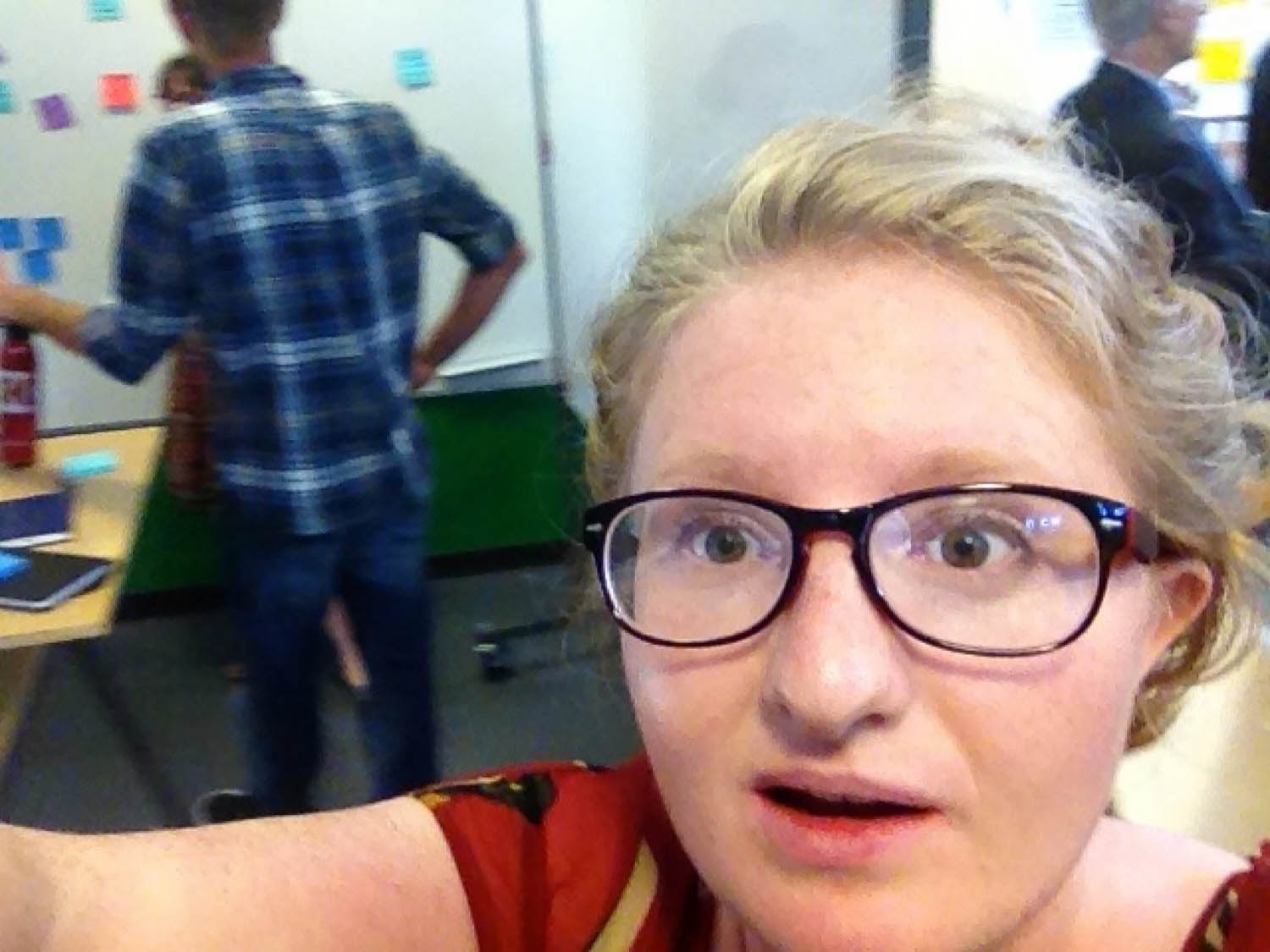
Let’s start with the idea of coaching. It was completely new to me that, at the HPI D-School, a coach is a crucial part of a design thinking team. I’d coached short workshops before, but I’d never seen coaches work with teams over weeks and months. At first, I didn’t understand what coaches were supposed to do. But, once I started getting to know the coaches’ role, and started coaching myself, an entirely new level of educational discussion and design opened up to me. Coaches advise and structure the process, enhancing the impact of a design thinking learning experience by giving tailored guidance to both teams and individuals. I wouldn’t argue that a coach is always necessary in every situation; design thinking without a coach can promote independence, ambiguity tolerance, self-organization, and risk-taking. But now I can also access and understand the benefits of practicing design thinking with a coach: expertise, credibility, a customized learning experience, and a sense of perspective and wisdom.
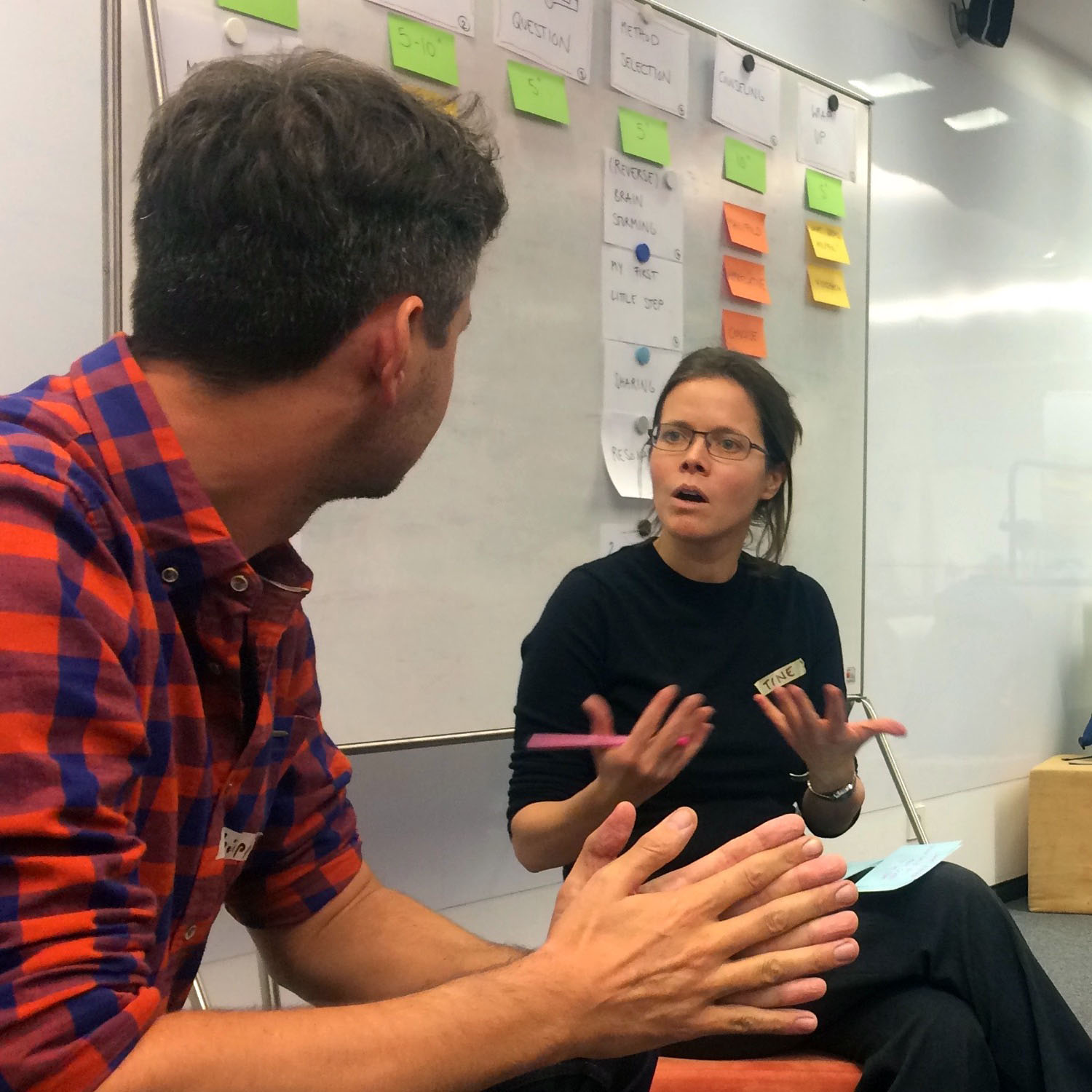
One of the most interesting differences is one that, believe it or not, dawned on me little by little: at the HPI D-School, we work in a language different from the dominant language around us. 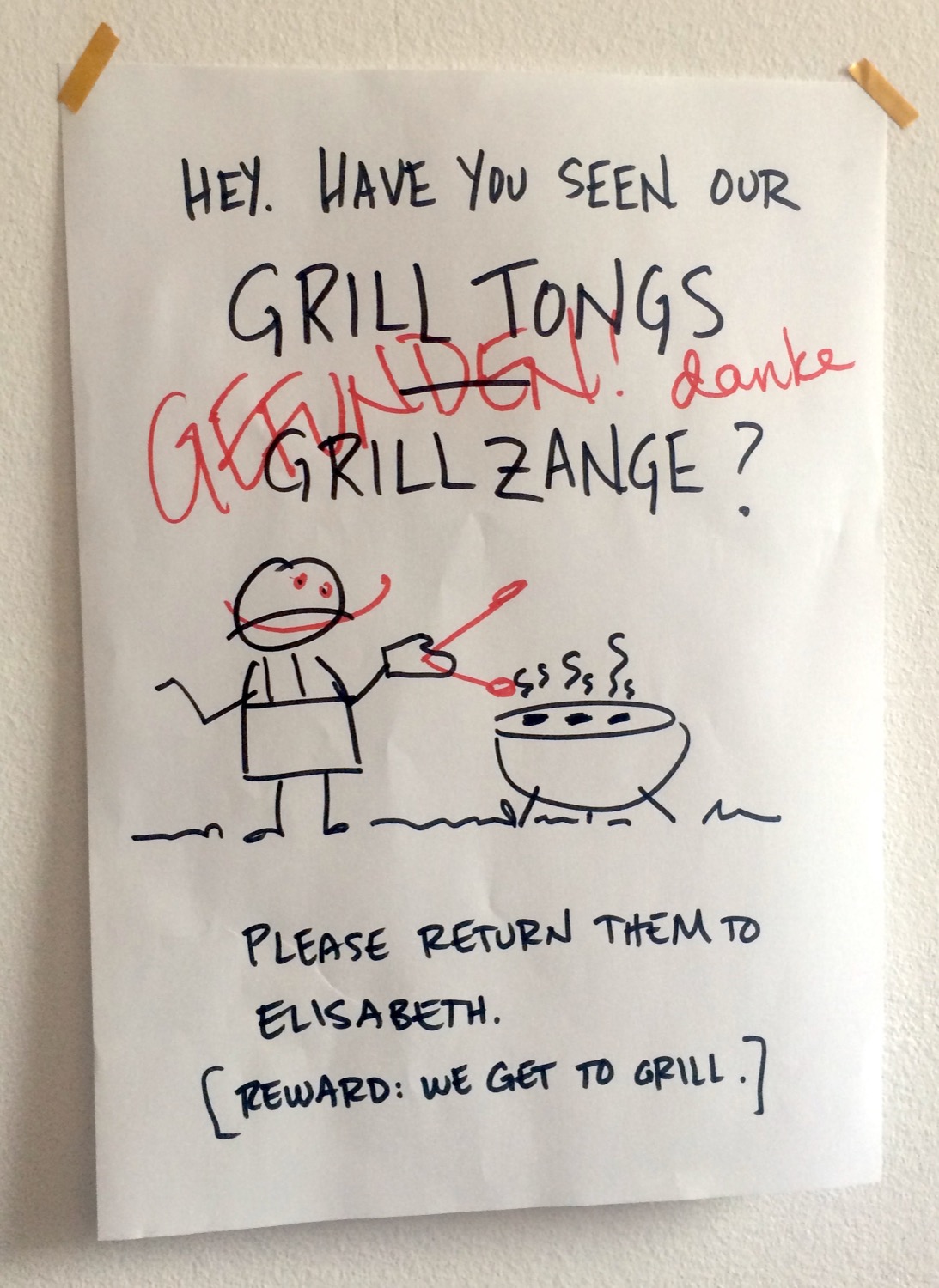 At first, I only noticed that conversations in English seemed to take slightly longer than I was used to, and that I had to cut some obscure slang from my vocabulary. Then I started getting used to a distinct conversational cadence, where we sometimes jump between English and German in order to get the right meaning across. Gradually, I started to see how having many languages at our disposal, even if we’re not all equally fluent in all of them, brings us some major advantages. We don’t rely just on words, and we make an extra effort not to overanalyze each other’s language. Even though we tend to use clearer language in general, we’re at peace with the ambiguity and imprecision of words. Metaphoric, visual, and embodied communication often take center stage. And our ease with multiple languages adds another dimension to the diversity that we can welcome and use.
At first, I only noticed that conversations in English seemed to take slightly longer than I was used to, and that I had to cut some obscure slang from my vocabulary. Then I started getting used to a distinct conversational cadence, where we sometimes jump between English and German in order to get the right meaning across. Gradually, I started to see how having many languages at our disposal, even if we’re not all equally fluent in all of them, brings us some major advantages. We don’t rely just on words, and we make an extra effort not to overanalyze each other’s language. Even though we tend to use clearer language in general, we’re at peace with the ambiguity and imprecision of words. Metaphoric, visual, and embodied communication often take center stage. And our ease with multiple languages adds another dimension to the diversity that we can welcome and use.
I knew already that only a small fraction of the information people take in is verbal. But it wasn’t until I taught in Potsdam that I started to train and use my other channels of communication in earnest. Not only did I start to learn German, I began emphasizing visuals and sketches during collaborative work. I also began to notice and experiment with my body language, my gestures, and the tone and rhythm of my voice in different situations. It’s helped me become a clearer, more forgiving, and more mindful communicator, especially in diverse groups.

I could go on for pages with overall anecdotal observations about the differences I’ve noticed from two years teaching at each institute. Teams in Palo Alto want to get to the next step as quickly as possible, while teams in Potsdam take more care to make sure everyone’s on board. More students in Potsdam have a meta-interest in innovation processes, compared to students in Palo Alto, who are more focused on what outcomes a process makes possible. Teams in Palo Alto are more likely to dare to try activities that might lead to failure, while teams in Potsdam are more patient and determined when they are recovering from failure. It took me a while to notice these relatively subtle differences; every day I teach here, I notice even more, making me (I hope) a more sensitive and flexible designer and teacher.
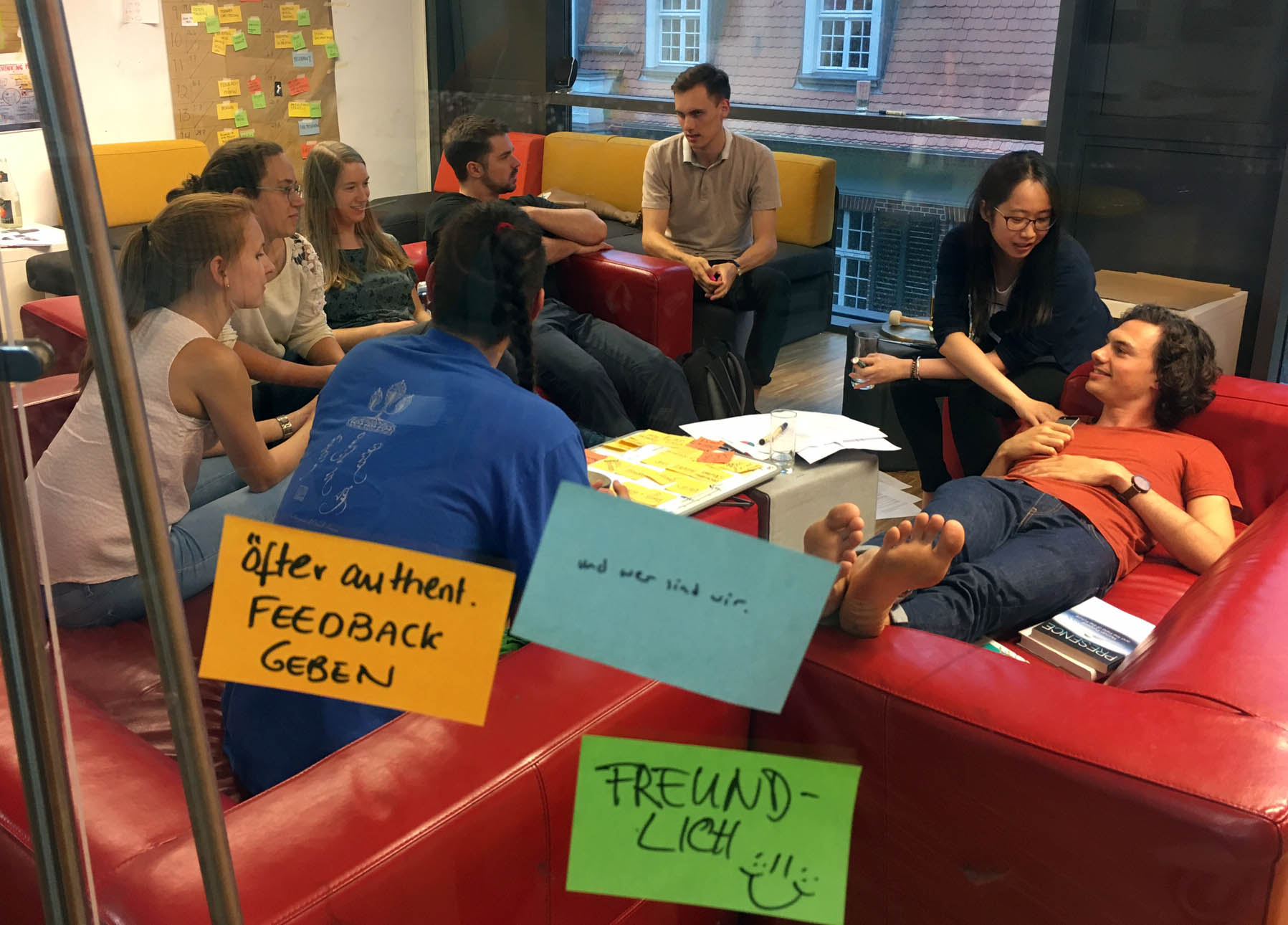
Our success at spreading design thinking has a predictable side effect: we are now quite good at convincing others, and ourselves, that our way of practicing design thinking is right. I’m glad we’ve achieved so much consistency; after all, that’s what brought me to the HPI D-School in the first place, and made a framework where I could contribute.
But, alongside getting better at spreading our vision, we must also observe and learn from the diversity around us to deepen our understanding of what we do. Behave like a design researcher: don’t just learn from people who seem like you. Find learners, teachers and practitioners of design thinking who will turn your expertise on its head. Most of all, don’t be afraid to do something different with design thinking so that it meshes with your culture, your company, your country, your language, your values – just be intentional about what you do. That way, somebody can visit you, see what you’re doing, and learn from the decisions you’ve made.
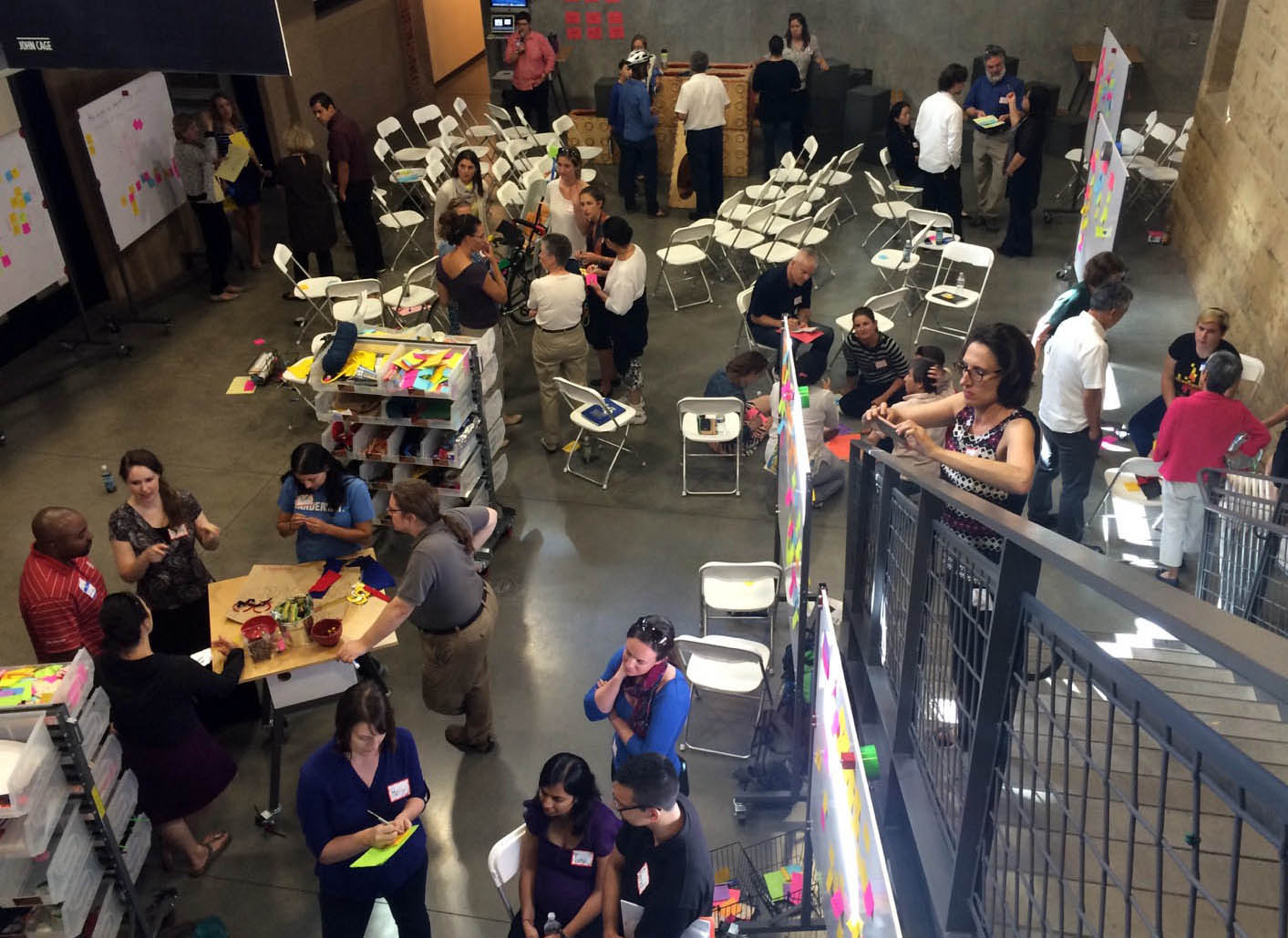
The surface commonalities brought me to a different D-School. My fascination with the deeper differences kept me there. Two years later, I’ve now taken the train to and from Griebnitzsee almost a thousand times, based on my back-of-the-napkin calculation. I understand the train conductor’s announcements, but half the time I don’t hear them because I’m chatting with a friend – in German.

But I’m still noticing newness and unfamiliarity around me every single day. And this is truly an experience I’d wish upon every teacher, learner, and practitioner of design thinking.
The chapter above will appear in the English edition of Design Thinking Live, due out in 2017 from Murmann Publishers. The German edition appeared in 2015. Text published on my blog with permission.
Thanks to editors Uli Weinberg and Christoph Meinel, as well as to Axel Menning and Martin Schwemmle for their editorial feedback. All photos © Molly Wilson.